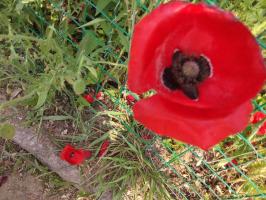Soil selection
Deep mountain Michelia belongs to shallow root tree species, so sandy soil with deep and fertile layer, sufficient water source and good drainage should be selected
Applying base fertilizer to the soil and using liquid to disinfect and kill insects can effectively reduce the incidence of underground pests
Seed selection
Deep mountain Michelia seeds can be picked and sown with simple reproduction. But if we want to get a good deep mountain Michelia, we still need to sow it carefully
Spring March is a good time for sowing. Before sowing, the seeds can be soaked in 0.5% potassium permanganate solution for 2 hours, and then put into warm water for 24 hours. This step is to promote germination
After the seeds absorb water and expand, take out the seeds. After drying, they can be mixed with calcium, magnesium and phosphorus fertilizer to increase the nutrients of the plant

Sowing period
When sowing, bury the seeds in the soil for about 1-2 cm, and then cover the surface of the seeds with burnt mud ash, about 1 cm thick. Then the seeds can be completely covered with loess
After sowing, it should be covered with Langyi grass, which is conducive to keeping the soil loose and ensuring a certain humidity, which is conducive to the successful germination of seeds
Later maintenance management
About one month after sowing, the seeds can basically break through the soil and germinate. At this time, you can take off the "coat" of Langyi grass

The seedlings of Michelia in the deep mountains are fragile and vulnerable to various pests. Therefore, we should pay attention to the prevention and control of diseases and pests at this stage. For specific prevention and control methods, you can refer to our previous articles< span>

 how many times do yo...
how many times do yo... how many planted tre...
how many planted tre... how many pine trees ...
how many pine trees ... how many pecan trees...
how many pecan trees... how many plants comp...
how many plants comp... how many plants can ...
how many plants can ... how many plants and ...
how many plants and ... how many pepper plan...
how many pepper plan...































